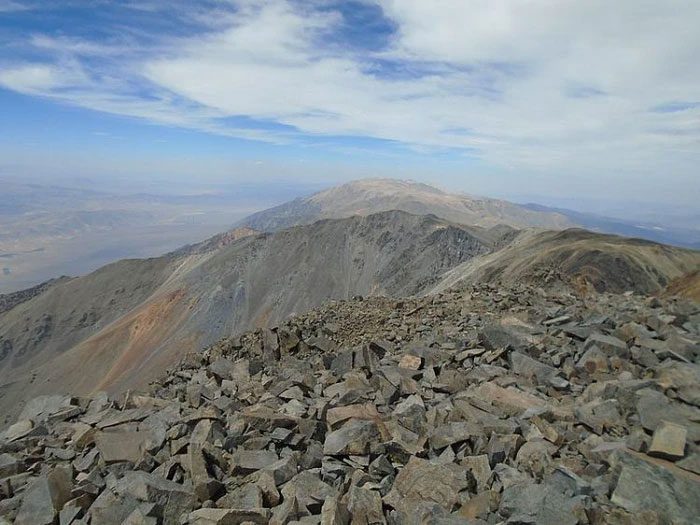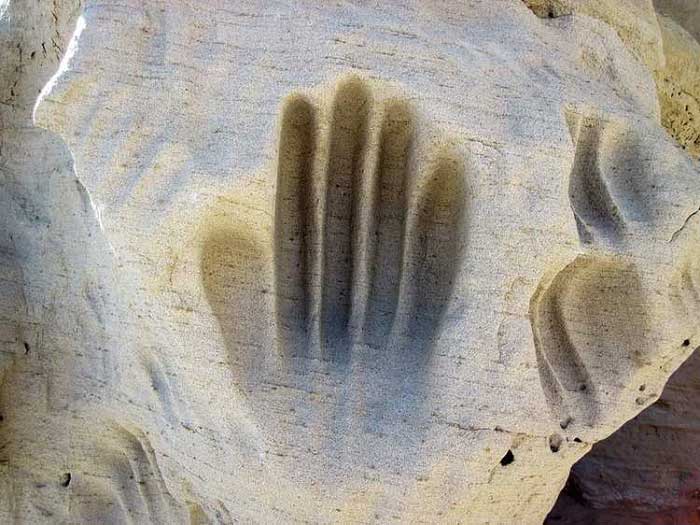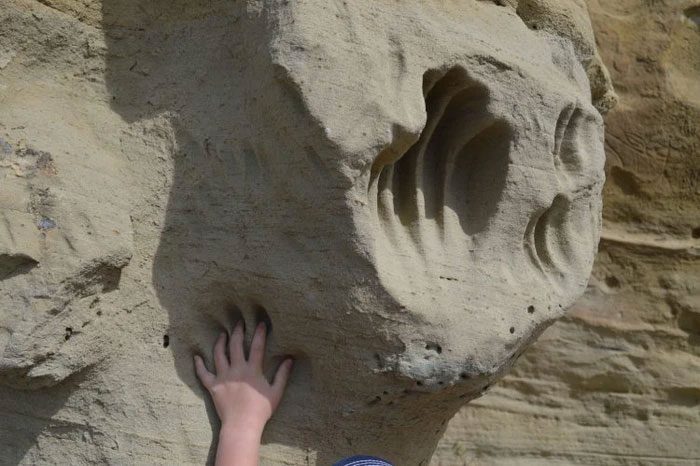We can glean some insights into how our ancient ancestors lived through the marks they left behind in the stones and caves we can see today.
The petroglyphs at White Mountain are compelling evidence of the life of Native American tribes that inhabited the area between 200 to 1,000 years ago. In addition to the hundreds of carvings in the region, there are also giant handprints etched into the rocks.

In other parts of the world, rock carvings can be over 20,000 years old. However, their prevalence began to decline with the discovery and use of other forms of writing surfaces, various art forms, and pictographs.
The site of the rock carvings in the White Mountains is located in the Red Desert, Wyoming, which was once home to Native American tribes.
The rock carvings and pictographs serve as a window into the past, providing us with data and information about the lives of the people who created them.
Here, on the rock face, the carvings and handprints represent the most tangible connections we have with the Great Basin Native Americans who lived here between 200 and 1,000 years ago. They include the Shoshone, Arapaho, and Ute tribes.

In many cultures, such as that of Native Americans, these carvings continued to be made until they came into contact with Western culture, sometimes as late as the 18th or even 19th century.
These rock carvings tell us a great deal about the beliefs and culture of the people who lived here hundreds of years ago and beyond. There are carvings in the White Mountains that depict bison hunts and moose. The rock face features carvings of buffalo and wild horses. In addition to animals, there are many interesting geometric shapes and small footprints adorning the rock surface.

A bison carved into sandstone. The Plains and Great Basin Native Americans were the first inhabitants of Wyoming, leaving behind petroglyphs at White Mountain centuries ago.
While there is limited information about the shapes or symbols from the past, Native Americans still regard them as sacred symbols. They feel a connection to nature and a positive energy when visiting this site. According to a Native American elder, these symbols hold significant and communal meaning for them. They feel that these rocks are alive and connected to them.

There are hundreds of carvings and drawings here, each telling a story from centuries ago.
But the most mysterious are the handprints deeply etched into the solid sandstone, as if someone mysteriously softened the stone and pressed their hand into it.
According to historians, the handprints were made by the Easter Shoshone tribes around 1,000-1,800 AD. Since then, thousands have continued to make similar movements with their hands on the sandstone. This has created the effect of deeply etched handprints in the rock.

According to historians, the handprints were made by the Easter Shoshone tribes around 1,000-1,800 AD.
According to a Wyoming history website, this is the birthplace of the Plains and Great Basin tribes. Local stories tell that Native women would often visit the White Mountains when giving birth. As they began to go into labor and experienced contractions, their hands would often grip the mountain face, and over time, deep handprints were created in the sandstone.
Today, this site is considered very sacred by Native Americans, and visitors are encouraged to respect the location and refrain from damaging any part of its history through vandalism.

Today, the rock carvings at the White Mountains remain one of Wyoming’s best-kept secrets, attracting only about 12,000 visitors each year (with free admission).
The rock carvings at White Mountains are created from sandstone, a soft rock that hardens over time. They were likely carved using a harder object than sandstone.
But what about the handprints that appear to be pressed into the stone? They are embedded deep in the solid sandstone, giving the impression that the ancients somehow softened the stone. Although this has not been extensively studied, experts believe that the birthing story may have a plausible explanation. These stones are soft, and over time, through countless instances of pressing hands into the sandstone, this may have caused the handprints to imprint deeply and widely into the rock.
Not only at White Mountains but across the globe, there are similar examples of bending and carving stone. In fact, to this day, scientists and historians often debate whether ancient civilizations truly knew advanced mechanisms to melt or soften stone.
Scientists also believe that ancient cultures may have known how to use high temperatures to shape stone. This process may have vitrified the surfaces of the stones, making them glass-like and easier to carve. However, how this process was specifically carried out remains a mystery.
The rock carvings in the White Mountains have yet to be studied or formally researched by anyone. Currently, the White Mountains receive only 12,000 visitors each year. It is hoped that visitors to this special monument will respect its sacredness and tread lightly to preserve the rock carvings for as long as possible.


















































